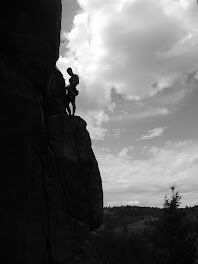At a recent class for Imagilearn SLemester, lead by John Jamison or Virtual Bacon (http://imagilearn.com/ ) in Second Life, Madddyyy Schnook ( Second Life name) was the presenter. Madddyyy made the following statement, “Why have we got a floor, why are we sitting down, why do we have a roof? and a fire? we live in a world that is not bound by real life constraints, remove all of the comfort zones and then you bring (people) out of their comfort zones—then you have a product (an) educational product to work with---outside the box thinking.”
In response Virtual Bacon observed, “That’s a great point---we’ve thought a lot about that here—and our floors and roofs are intentional because our primary goal here is bringing traditional education (educators) into Second Life—and we have found that familiar appearances helped a great deal during that initial period,”
Both of the people are right in their observations …Second Life, like the Wild West has had to “conform.” As I reviewed the above dialogue I realized here was my inspiration for this blog. I am fascinated with the architecture and traditionalism of a site like Caledon which covers many sims, however I immediately saw the point that Madddyyy Schnooks was making. Madddyyy developed the concept of and is the owner of Second Life guides. These guides are the how to/go to guides to living in Second Life. I found this blurb about Madddyyy on Amazon.com,
“Andy Sullivan (aka Madddyyy Schnook in Second Life) gave up a GBP 65,000-a-year sales and marketing job to work full-time in Second Life. He is successfully supporting his family through his inworld publishing activities. He has sold 100,000 e-copies of his SL guides and has become one of the top twenty recognized brands within Second Life.”
John Jamison, AKA Virtual Bacon in Second Life is known for his research, observations on the immersive learning environment and work with others to be successful in Second Life. These two are pioneers in Second Life as well as advocates for this environment in business and education.
I am not the expert, by any means, on anything in Second Life. I am an explorer, a land owner, a “wanna be” entrepreneur and teacher in Second Life. I have toured numerous universities and educational sites some are great..Sci Lands is an amazing collection of science themed sims that provide for labs, learning experiences and opportunities unparalleled in the “real world.” I have the good fortune to be able to learn about Second Life through their experiences.
In my tours of education/university sims I have found that doors, stairs, halls and lecture rooms do not tap into the potential of the immersive learning environment that Second Life provides. Not only this but an environment with too many constraints are very difficult for the newby avatar to move around in. On the other hand, those who are pushing on to make Second Life seen as a viable option for learning, provide a learning experience for students as well as a quality instructional experience for teachers/faculty must accept the traditional point of view.
Yes we have to take this seriously (in spite of the spontaneous fun moments that occur in Second Life) demonstrate that it can provide a quality learning experience, has the capacity to provide a means for students to achieve certain prescribed learning experiences, stay focused on the appropriate content, and stay engaged in their learning. But let’s not limit the potential that is available in this environment that we need to take advantage of to demonstrate to students that the experience is worth their learning the navigation, communication and other necessities of a successful Second Life. In Second Life the students can have a great deal of control over his/her learning experience.. The learning experience in worlds like Second Life can be self-created, co-created with other students, Second Life residents, and the instructor.
Traditional educational builds are beautiful as they replicate the college or university campus, however they are not necessarily successful in an instructional sense. Second Life is effective for learning in that it can be described (in my words as content versus content repository. Taking this further the student can also “self-create” their own learning if that creation is part of the learning outcomes of their course or program. Further content in Second Life as learning object may be a learning object, field trip, or experience that is relevant to their course or program. Of course it should be kept at the forefront of planning the Second Life part of the course that in order to engage the student they must be able to clearly see the connection between their Second Life experience, the activity and the learning outcomes of the course.
Because of the immersive learning environment (defined as a combination of virtual worlds, simulators, learning games and sophisticated digital media voice chat, game-based learning modules, audio/video, and so forth with collaborative online learning environments, study rooms, and classrooms. Immersive Education gives learners a sense of "being there,” retrieved from immersive.org 8/4/09) that is provided by Second Life and other virtual learning environments.
Learning in an immersive environment is effective, applied learning that is constructed. The student is immersed in and can experience the activity or event through the actions of his/her avatar. The students also experience the events with others, an opportunity to network, share and communicate with others while participating in a learning experience in virtual worlds.


